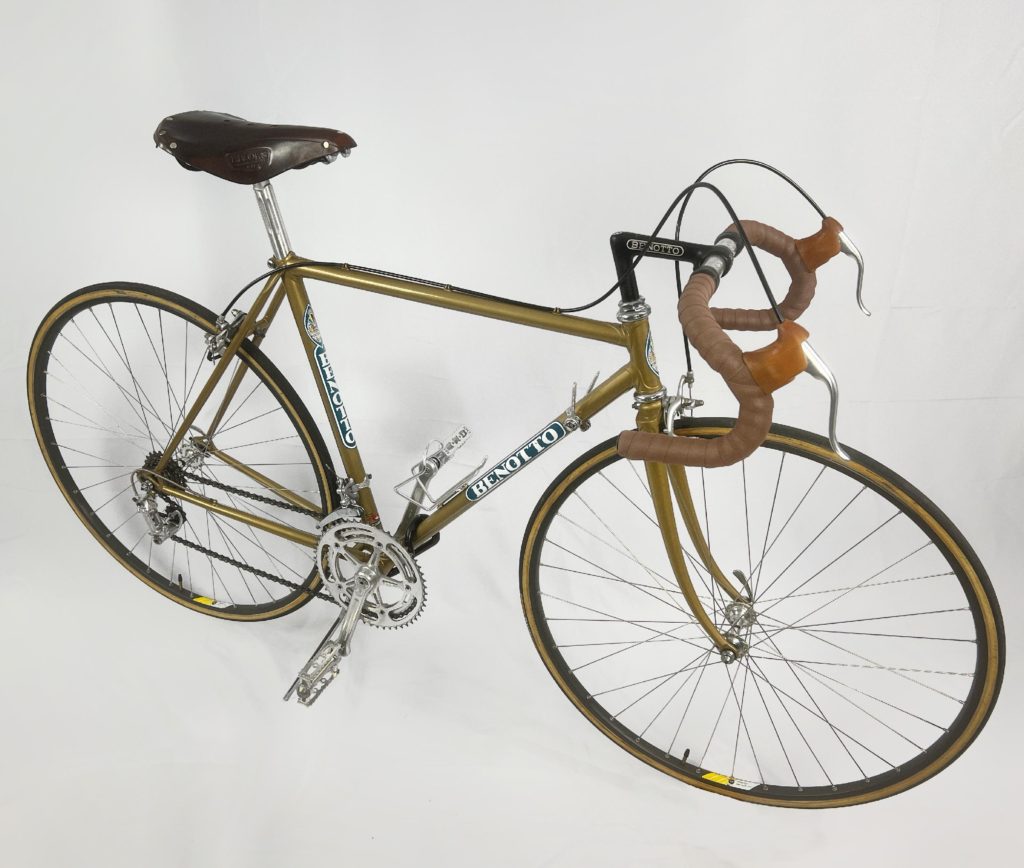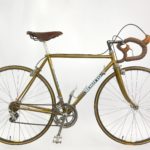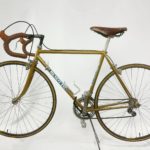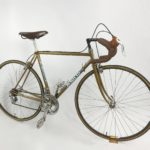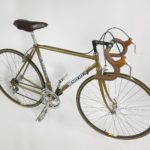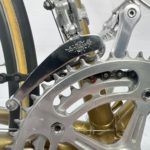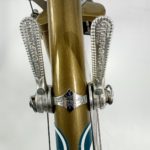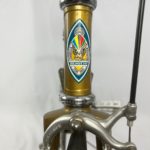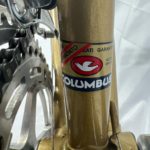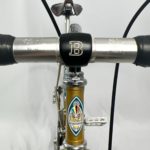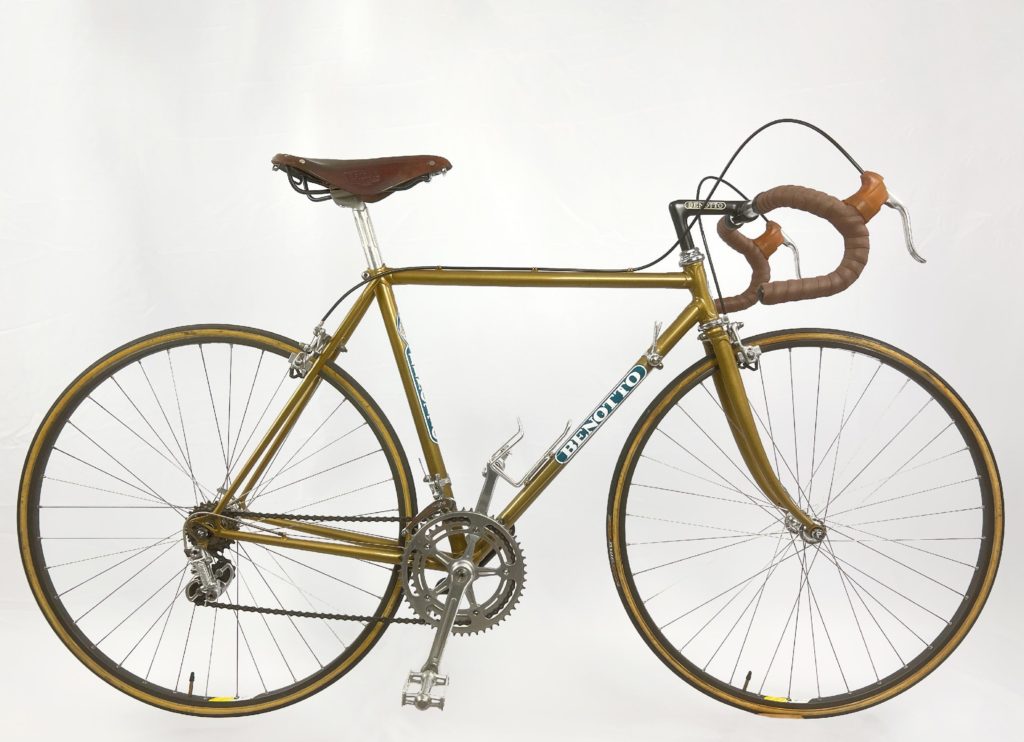
Sometimes a bike just radiates warmth. It invites your eyes to dance over its curves, linger on the finer details, and imagine the wind rushing by as you ride it on a sunny day. This 1977 Benotto 2500 is that kind of bike, and was a pleasure to restore. Equipped with a Campagnolo Nuovo Record groupset, it exemplifies the ideal of the Italian racing bicycle as envisioned by its founder and former racer, Giacinto Benotto. Read on for more photos and background on this bicycle and the legendary brand behind it.
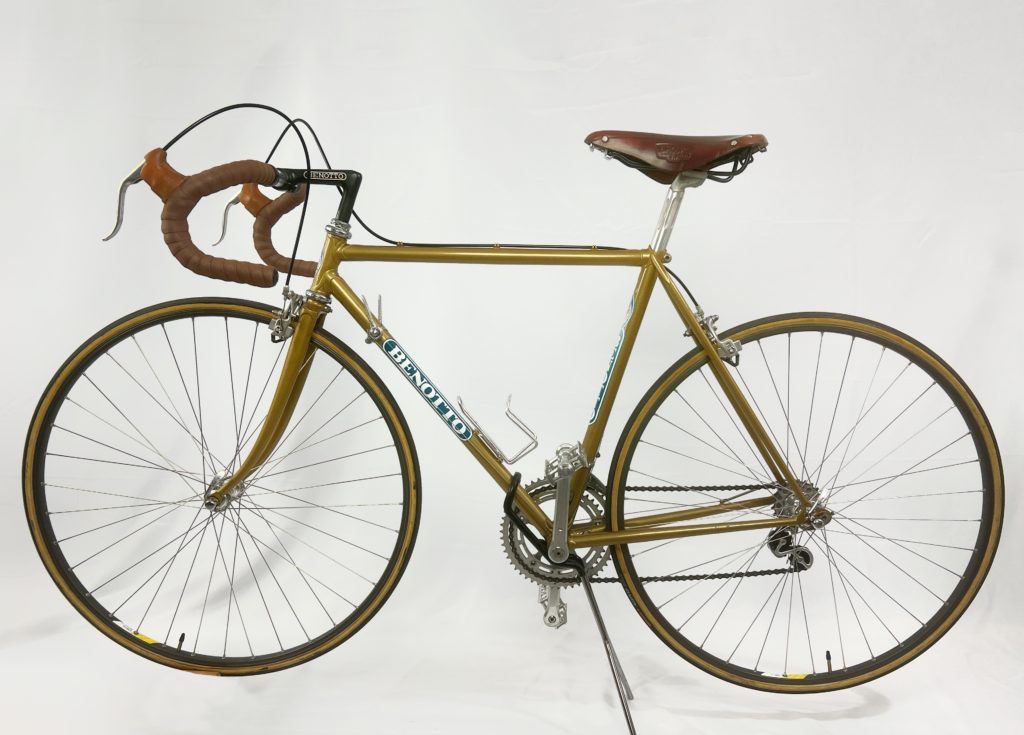 This Benotto 2500 is for smaller riders, with a 51cm (CTC) seat tube and 52cm (CTC) top tube, with a 30-inch standover. In addition to the Nuovo Record components, it sports a matching sew-up wheelset with Super Record hubs and Campagnolo Omega alloy rims. The only non-Campy bits are the Zeus freewheel (14-15-19-21-22), Dia-Compe brake set, SR seatpost and modern MKS pedals.
This Benotto 2500 is for smaller riders, with a 51cm (CTC) seat tube and 52cm (CTC) top tube, with a 30-inch standover. In addition to the Nuovo Record components, it sports a matching sew-up wheelset with Super Record hubs and Campagnolo Omega alloy rims. The only non-Campy bits are the Zeus freewheel (14-15-19-21-22), Dia-Compe brake set, SR seatpost and modern MKS pedals.
It was a bit of a mystery to identify the model. It has long Campagnolo 1010/A rear dropouts and matching fork ends, and a Columbus tubing sticker, indicating a high-end model. Other details, like the brazed-on cable guides, water bottle bosses, seat stay caps, painted (instead of chromed) fork, and head badge didn’t match up to catalogs. Along with the clamp-on style of shift levers, it was a confounding mix of features found on both older and newer Benotto bicycles.
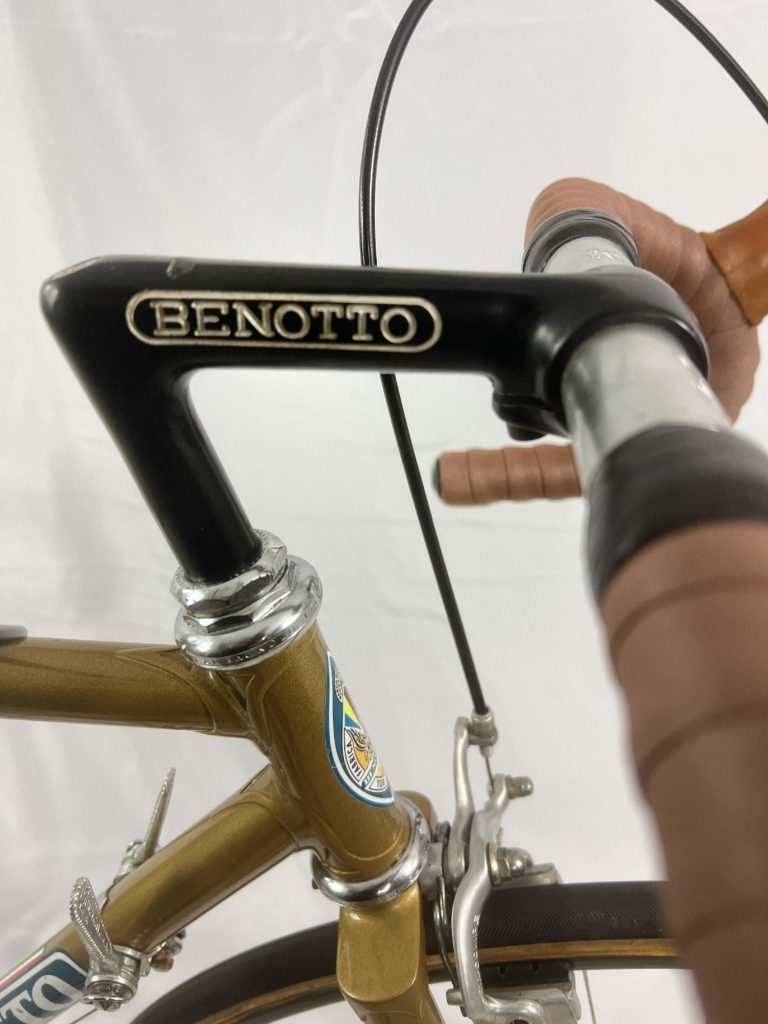
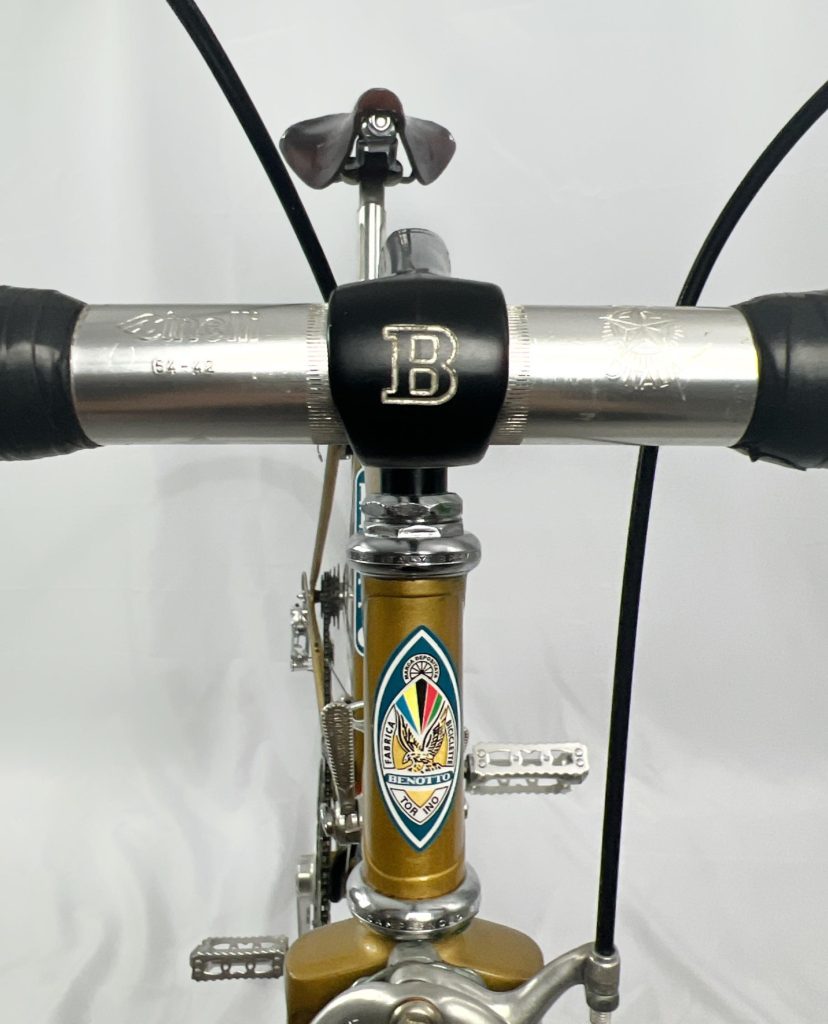
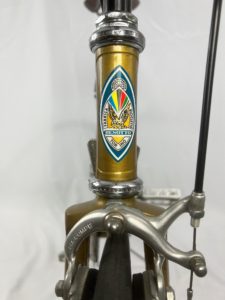
The expert I consulted noted that the Columbus tubing decal was the type applied when a frame had been repainted, and that “…the most significant feature are the long, non-Portacatena dropouts. Typically, on a high grade road bicycle, this means pre-1978. It has higher grade workmanship than I typically see on their lower mid-range Falck models and, based on those dropouts, it’s likely too early for [Columbus] Aelle [tubing].
Consequently, I suspect this is one of the 2xxx models and either tretubi SL or full SL. Based on extant catalogues, we know that Benotto still wasn’t embossing their frames and stay caps at least as late as 1977. As for the head tube logo, remember that is almost certainly a re-decal, as it has the Columbus repaint decal and the paint is far too gold for the traditional Benotto nickel-beige.”
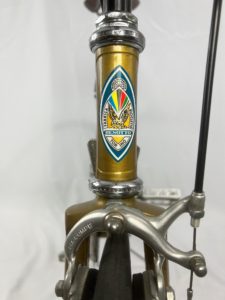
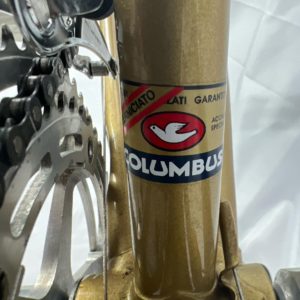
Like its peers Colnago and Cinelli (Cino Cinelli rode for Benotto’s team in 1944), Benotto was founded by a former professional racer. Giacinto Benotto was 24 years old in 1931 when he established Bicicletas Benotto in Turin. Three years after World War Two ended, Mr. Benotto’s eyes turned to Latin America following the discovery of oil in Venezuela. He expanded the company into Mexico, building the lower-end bicycle models there while retaining production in Italy for the premium tiers. By 1950, with the help of his relative Felice, they had launched a Benotto cycling team in Mexico. A year later they had three world championships under their belt, with Antonio Belivacqua winning the Paris-Roubaix on a Benotto.
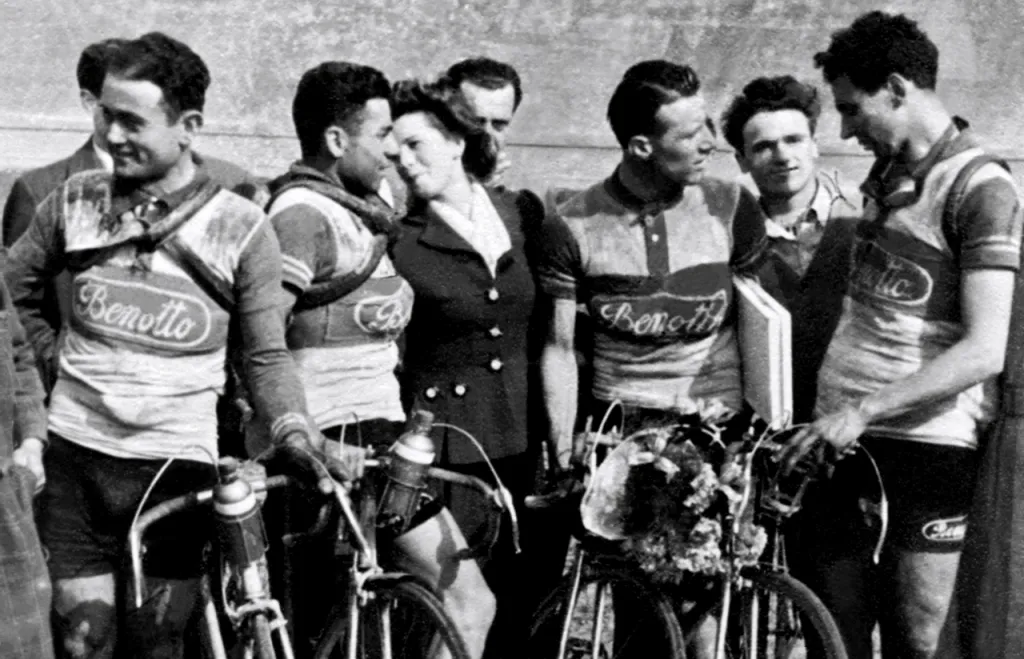
Giacinto Benotto and wife Lea with the team
Ole Ritter set the Hour record in 1968 on a Benotto, which would stand unbroken for four years until Eddy Merckx shattered it in 1972. In the mid-late 1970s Benotto bicycles were ridden to victory by the world’s most elite cyclists, including Francesco Moser, Roger De Vlaeminck, and Freddy Maertens. The catalog cover photo below, featuring Mr. Benotto, is from the early 1980s when they could now claim over 10 World Champion victories.

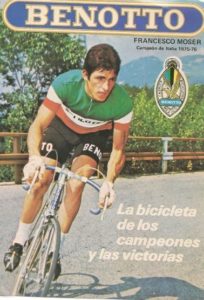 In addition to bicycles, the Benotto brand included a line of highly-regard handlebar tape, as well as cycling accessories like jerseys. Unfortunately, while they started the 1980s as a dominant and highly respected brand, a major business decision in 1985 would prove to be their undoing. Benotto centralized all bicycle production in Mexico, and soon after reports were surfacing of their top-tier bicycles cracking at the head tubes and bottom brackets. The Mexican factory was inexperienced in working with the high-end tube sets found on the premium models, and overheated them during the brazing process, which led to the failures.
In addition to bicycles, the Benotto brand included a line of highly-regard handlebar tape, as well as cycling accessories like jerseys. Unfortunately, while they started the 1980s as a dominant and highly respected brand, a major business decision in 1985 would prove to be their undoing. Benotto centralized all bicycle production in Mexico, and soon after reports were surfacing of their top-tier bicycles cracking at the head tubes and bottom brackets. The Mexican factory was inexperienced in working with the high-end tube sets found on the premium models, and overheated them during the brazing process, which led to the failures.
As a result, Benotto’s star was on the wane by the late 1980s. The cracking issues continued to be a problem, and by the 1990s they had dropped out of favor with the pro peloton. Today, the brand still survives and is now made in the USA. To learn more about Benotto’s history and how to identify the various models, please check out these essays by “Fast Eddy“, Jonathan Whiting and Steven Whitmore, all of which helped me a great deal in writing this article.
Benotto bicycles from the glory days are collector’s items, with a special emphasis put on those made in Italy, for the reasons explained above. This one is a fantastic example of Italian craftsmanship, and is ready to sparkle brightly in the sun as it rolls down the road to its next adventure. Check out the gallery below to see all of the high-res photos.
